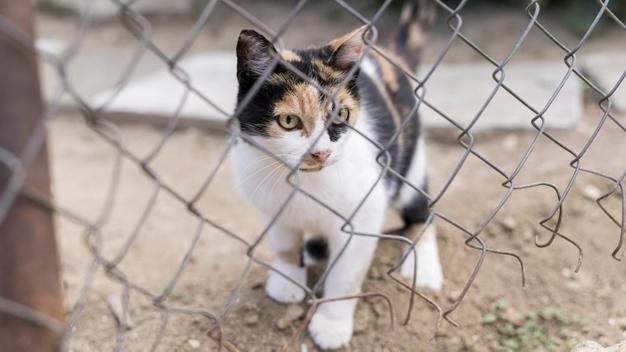All the pet owners and their friends are well aware of the fact that cats feel pleased when they discover new places. With these extremely playful, active, and often destructive little creatures, it may seem like a task highly impossible to achieve to keep the house clean and organized.
How does the idea of letting your cat have its own designated place outside, in your porch or garden sound to you? They will be well protected from the unwanted guests and predators while they have ample space around them to be as playful and creative explorers. This can be a complete win-win situation for you as you will have a happy pet along with a clean and organized house.
How does the idea of getting a Cat fence fixed in your garden area sound to you? We are well aware that there are many cat owners who feel hurt and torn just at the idea of limiting their cats to an indoor environment. Make sure you log on to www.critterfence.com and discover directions that you can follow without having to choose between the safety and comfort of pets.
Why should you use a cat fence?
- Your cat can have the access to the outdoors as it enjoys being in fresh air which in fact is even necessary for health and well-being in general.
- Your cat won’t have to face and fight the neighbor’s cat, although you might enjoy this sight.
- You need a Cat fence to protect your pet from untimely accidents and injuries.
- You will never have to track your cat or keep running behind it when being outdoors. Cat fence eliminates the owner’s requirement of surveillance
- Pet thieves feel discouraged seeing the fence as they face the danger of poisoning
- You won’t have to pay a huge bill to the Vet because your cat will be safe and healthy
Let’s read through different types of fences to compare and analyse the appropriate cat fence that suits you:
- Free Standing Fronts
These free-standing barriers are made of thin mesh nets strung between metal poles. As the name implies, these freestanding fences can stand on their own or can be mounted within an already existing fence. The speciality of this type of cat fence is that they are generally bent and around 6-foot tall in height. This prevents the cat from attempting to jump over.
This type of fence is very common among pet owners since they don’t necessarily require an existing fence. Another advantage is the thin mesh, which is not apparent to be viewed from a distance.
- Wireless Cat Fence
This is another form of fence that includes a hidden wire in a lawn. You must make sure that your pet wears an electronic collar as the wire sends signals to the collar the minute your cat approaches the barrier that you wouldn’t prefer it to cross. In case the cat doesn’t respond to the warning signal, it will receive a mild shock that stops the fence perimeter. This small but successful training method teaches the cat to remain within limits and gradually avoids the perimeter over time.
- Fencing of metal
You may also choose to opt for a metal cat fence. Do not mistake this for the one that is used for dogs. Cats are known for being great jumpers which nullifies using a regular metal fencing. In order to fence your cat’s yard area, you need either to enclose the arch or the roof of the fenced area inward to the top to prevent the cat from jumping over the fence.
- Spiky Stripes
You can easily mount these spiky stripes at the top of all your fences. If your fence is high enough, spiky strips can easily discourage your cat from jumping over the top along with discouraging other cats from jumping inside your property. These strips are simple and are very cost-effective for pet containment.







